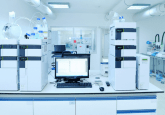Chip off the old block: novel lab-on-a-chip techniques for R&D

Diseased ‘organ-on-a-chip’ model confirms intestinal barrier disruption as the onset initiator of gut inflammation
Rhiannon Finnie (Future Science Group)
Researchers from the Cockrell School of Engineering (The University of Texas; TX, USA) have successfully developed the first investigation into the mechanism of disease utilizing human ‘organ-on-a-chip’ technology. Using their ‘gut-inflammation-on-a-chip’ microphysical system, the investigators have confirmed intestinal barrier disruption is the onset initiator of gut inflammation.
Organs-on-chips are microchips lined with living human cells to model various organs and serve as accurate models of organ functionality in a controlled environment. This study, recently published in Proceedings of the National Academy of Sciences, is the first example of using a diseased organ-on-a-chip to demonstrate how a disease develops in the human body. The researchers chose to examine gut inflammation.
Lead investigator, Hyun Jung Kim (The University of Texas), explained: “By making it possible to customize specific conditions in the gut, we could establish the original catalyst, or onset initiator, for the disease. If we can determine the root cause, we can more accurately determine the most appropriate treatment.”
The results from the study may also cast doubt upon the established practice of taking probiotics for maintaining gut health. “Once the gut barrier has been damaged, probiotics can be harmful just like any other bacteria that escapes into the human body through a damaged intestinal barrier. When the gut barrier is healthy, probiotics are beneficial. When it is compromised, however, they can cause more harm than good.” described co-author Woojung Shin (The University of Texas).
In the future, Shin hopes to develop more customized human intestinal disease models, including colorectal cancer, in order to identify how the gut microbiome can influence inflammation, cancer metastasis and the efficacy of cancer immunotherapy.
Sources: Shin W, Kim HJ. Intestinal barrier dysfunction orchestrates the onset of inflammatory host–microbiome cross-talk in a human gut inflammation-on-a-chip. PNAS doi:10.1073/pnas.1810819115 (2018) (Epub ahead of print); www.sciencedaily.com/releases/2018/10/181025141101.htm
♦
Chip measures multiple cellular responses simultaneously in an effort to improve drug discovery process
Georgi Makin (Future Science Group)
A research team from the Georgia Institute of Technology (GA, USA) has designed and affordably developed a cellular interfacing array, measuring multiple cellular properties and responses in real time, potentially enabling more drugs to be tested comprehensively for efficacy and toxicity in reduced time.
“The innovation of our technology is that we are able to leverage the advance of nano-electronic technologies to create cellular interfacing platforms with massively parallel pixels,” explained Hua Wang, Associate Professor (Georgia Institute of Technology). “And within each pixel we can detect multiple physiological parameters from the same group of cells at the same time.”
Featuring four modalities, including extracellular or intracellular potential recording, optical detection, cellular impedance measurement and biphasic current stimulation, the chip reportedly offers four advantages over existing platforms. These include multimodal sensing, a large field of view, small spatial resolution and the low cost of production which can be easily scaled up for mass production.
Results published in Lab on a Chip describe how the chip has been utilized in research involving neonatal rat ventricular myocytes and cardiac fibroblasts to illustrate the multi-parametric cell profiling ability of the array for drug screening.
In the future, the team claims that we can expect to see this technology applied to many different areas of medicine, including personalized medicine and further developments in the automation of drug selection.
“The central theme of our research is how we can leverage the best platform created by nature with the best platform created by humans,” Wang concluded. “Can we let them work together to create hybrid systems that achieve capabilities beyond biology only or electronics only systems? The fundamental scientific question we are addressing is how we can let inorganic electronics better interface with organic living cells.”
Sources: Seok Park J, Grijalva SI, Aziz MK et al. Multi-parametric cell profiling with a CMOS quad-modality cellular interfacing array for label-free fully automated drug screening. Lab Chip. 18, 3037–3050 (2018); www.rh.gatech.edu/news/613204/new-chip-measures-multiple-cellular-responses-speed-drug-discovery




